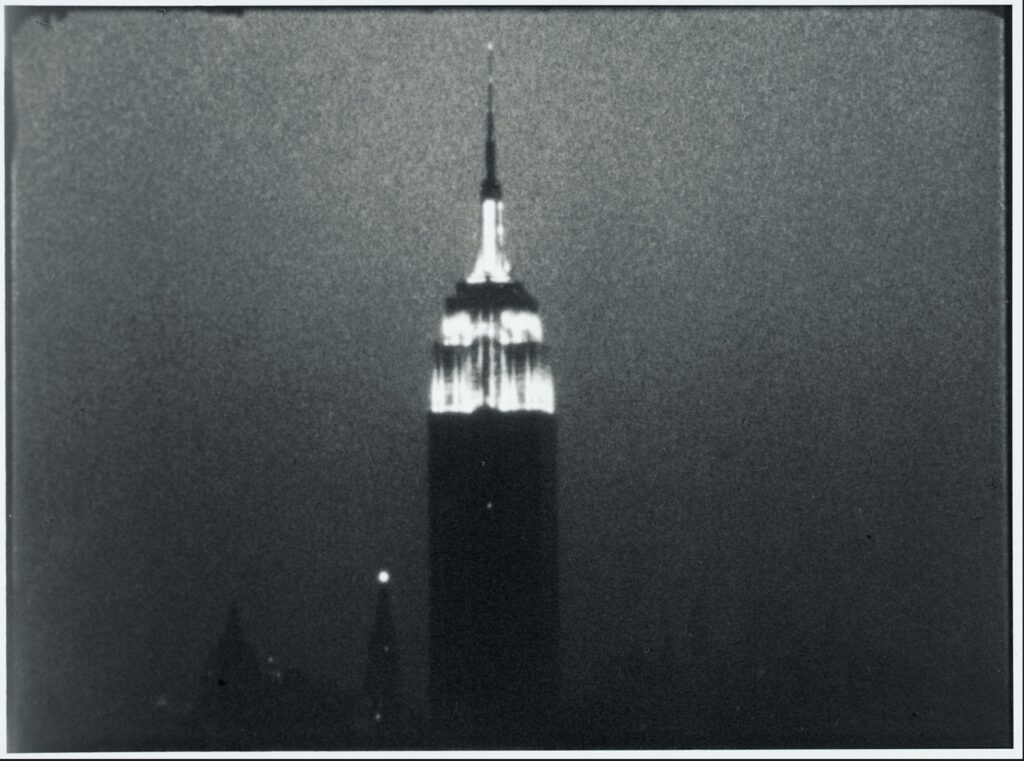
Empire (1964) by Andy Warhol
Sunday, February 11, 1990, 7:00 pm
The Films of Andy Warhol
A 7-Week Introduction
“All of my films are artificial, but then everything is sort of artificial. I don’t know where the artificial stops and the real begins.” (A.W.) “But it’s so easy to make movies, you can just shoot and every picture comes out right.” (A.W.)
Between 1963 and 1968—in the course of little more than 5 years—Andy Warhol and his “Factory” of stars and creative assistants made dozens of films which stunned American culture and forever transformed our understanding of movies as media. Yet in spite of the impact that Warhol’s films had both formally and in the foregrounding of gay sexuality, few of the films from this fertile period have been available in any form since Warhol suppressed them in the period following his near-fatal shooting in 1968.
Those who know Warhol’s films only from the post-Lonesome Cowboy features directed by Paul Morrissey (Flesh, Heat, Trash, etc.) will be startled by the originality and intensity of Warhol’s own efforts. Beginning with Sleep and Kiss (1963), Warhol’s films began an arc which encompassed the history of cinema: the early black and white films recording overlooked or mundane details of everyday life with a stationary camera, through scripted and acted color sound films which create shocking psycho-sexual portraits and explorations of cinematic space. Throughout all of Warhol’s films, action is pared down to its essential – “real time” is returned to in its purest form since Lumiere and the viewer’s position as a voyeur, is perhaps for the first time, repeatedly upended and confronted. Scores of soon-to-become cultural heroes and anti-heroes passed through the Factory during these years, including John Giorno, Ed Sanders, Jack Smith, Gerard Malanga, Ronald Tavel and Jonas Mekas, while many Warholian “superstars”—Nico, Ondine, Edie Sedgwick, Taylor Mead, and others, became celebrated in helping define a subculture synonymous with breaking sexual taboos.
For the next seven weeks the Cinematheque and Pacific Film Archive will concurrently present several of these films in their first public exposure in more than twenty years. Presented in cooperation with the Whitney Museum and Museum of Modern Art, all will be shown in pristine preservation prints, newly struck from the huge collection of originals Warhol left behind.
Program #3: Empire; The Life of Juanita Castro
Empire (1964, 48 min. excerpt from 8 hour total, silent, 16 f.p.s.). Warhol’s eight hour minimalist epic brought his early period to its climax and confirmed his status as the avant-garde’s most notorious figure.
The Life of Juanita Castro (1965, 60 min., sound). Script by Tavel. After the introduction of sound, Warhol’s productivity reached dizzying speed, as evidenced by this lesser-known work from 1965.